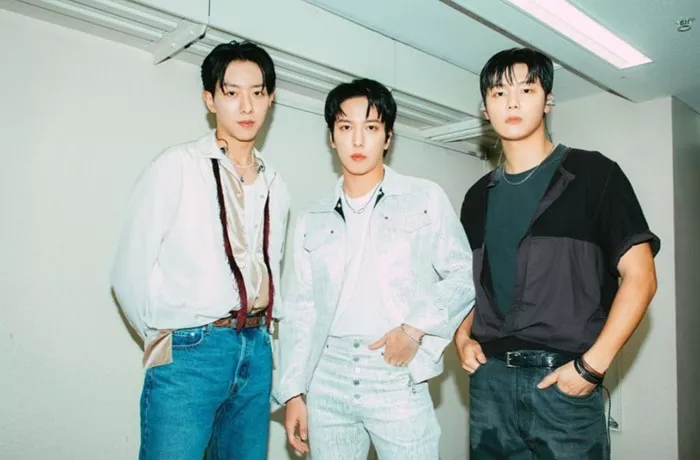The landscape of Korean pop music, widely known as K-pop, has witnessed remarkable growth and evolution over the years. One of the pivotal periods in this evolution is the 2nd generation of K-pop, which played a significant role in shaping the industry into what it is today. In this comprehensive article, we’ll delve into the defining characteristics, key artists, musical styles, global impact, and lasting legacy of the 2nd generation of K-pop.
Defining the 2nd Generation of K-pop
The 2nd generation of K-pop marks a transformative era in the industry’s history, spanning from the mid-2000s to the early 2010s. It is characterized by significant growth, innovation, and global recognition for Korean pop music. During this period, K-pop solidified its position as a cultural phenomenon, with the emergence of iconic idol groups like Girls’ Generation, Super Junior, BIGBANG, 2NE1, and SHINee. These groups brought a fresh wave of creativity, visual excellence, and diverse musical styles, including dance-pop, hip-hop, R&B, electronic, and rock influences. The 2nd generation also saw K-pop’s expansion into international markets, paving the way for its global popularity and setting the stage for future generations of K-pop artists.
Key Characteristics and Innovations
Music Diversity: One of the hallmarks of the 2nd generation was the diversification of musical styles within K-pop. While the genre’s roots remained in dance-pop and bubblegum pop, artists began experimenting with elements of hip-hop, R&B, electronic dance music (EDM), and rock, leading to a more varied and dynamic sound.
Idol Culture and Group Dynamics: The 2nd generation solidified the concept of K-pop idol groups, where agencies would train and debut artists as part of carefully curated groups. This era saw the rise of iconic groups like Girls’ Generation (SNSD), Super Junior, BIGBANG, 2NE1, and SHINee, each contributing to the genre’s popularity and appeal.
Globalization and International Recognition: As K-pop’s popularity surged domestically, agencies and artists actively pursued international markets, leading to successful tours, collaborations with Western artists, and a growing fanbase outside of Korea, particularly in Asia and later in Western countries.
Visual and Performance Excellence: The 2nd generation emphasized high-quality music videos, elaborate choreography, and polished stage performances, setting new standards for visual and performance excellence in the industry.
Key Artists and Groups
Girls’ Generation (SNSD): With their catchy tunes, synchronized choreography, and captivating visuals, Girls’ Generation became synonymous with the 2nd generation of K-pop. Hits like “Gee,” “Genie,” and “I Got a Boy” solidified their status as K-pop icons.
BIGBANG: Known for their innovative approach to music, fashion, and performance, BIGBANG revolutionized the K-pop scene with hits like “Fantastic Baby,” “Bang Bang Bang,” and “Haru Haru,” showcasing a blend of hip-hop, pop, and rock.
Super Junior: Renowned for their large member count and diverse talents, Super Junior dominated the 2nd generation with hits like “Sorry, Sorry,” “Mr. Simple,” and “Bonamana,” establishing themselves as global K-pop ambassadors.
2NE1: Bringing a fierce and edgy style to K-pop, 2NE1 made waves with songs like “I Am the Best,” “Fire,” and “Come Back Home,” showcasing their unique blend of hip-hop, R&B, and electronic influences.
SHINee: Known for their vocal prowess, intricate choreography, and trendsetting fashion, SHINee captivated audiences with hits like “Ring Ding Dong,” “Lucifer,” and “Sherlock,” earning them a dedicated fanbase worldwide.
Musical Styles and Evolution
During the 2nd generation of K-pop, musical styles underwent a significant evolution, reflecting the industry’s dynamic and innovative spirit. Artists began exploring diverse genres, expanding beyond traditional dance-pop and bubblegum pop.
One notable trend was the emergence of K-pop ballads, characterized by emotive vocals, poignant lyrics, and orchestral arrangements. Artists like Taeyang from BIGBANG and Davichi gained prominence for their soulful ballads, showcasing a more introspective and melodious side of K-pop.
Additionally, electronic K-pop gained traction, blending electronic dance music (EDM) elements with K-pop’s signature catchy melodies and upbeat rhythms. Groups like f(x) and solo artists like BoA experimented with EDM-infused tracks, incorporating synths, beats, and electronic effects to create infectious dance anthems.
K-pop rock also made waves, with bands like CNBLUE and FTISLAND infusing rock guitars, drums, and edgy vocals into their music, appealing to fans of alternative and rock genres.
Overall, the 2nd generation of K-pop witnessed a rich tapestry of musical styles and experimentation, contributing to the genre’s versatility and expanding its appeal to diverse audiences globally.
Conclusion
The 2nd generation of K-pop laid the foundation for K-pop’s global dominance and influence in the music industry. Its impact can be seen in the rise of K-pop fandoms worldwide, the integration of K-pop elements into mainstream Western music, and the continued success of 2nd generation artists who have transitioned into acting, entrepreneurship, and global philanthropy.
In conclusion, the 2nd generation of K-pop was a transformative period marked by musical innovation, global expansion, and cultural impact. Its legacy continues to resonate in today’s K-pop landscape, serving as a testament to the genre’s enduring popularity and evolution.

